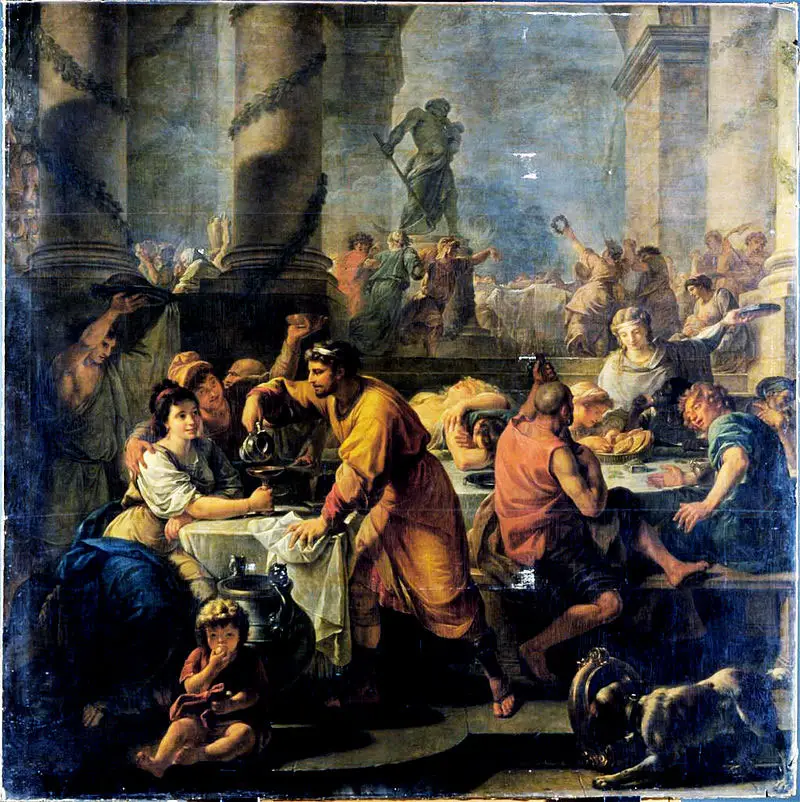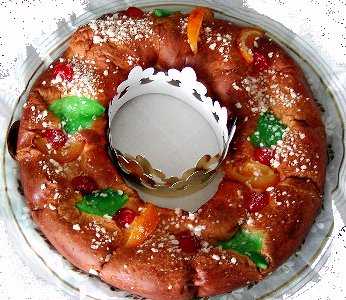December 13
Thank you to Anne Boleyn Files follower Lorna Wanstall for writing this guest article as today’s Advent Calendar treat. The origins of Christmas traditions are so interesting! Lorna is currently working on a novel of Mary, Queen of Scots.
Twelfth Night cake/Christmas Cake/Pudding

Twelfth Night cake has its roots in Roman times. The Roman God of agriculture was Saturn, and there was a festival held in his honour, known as Saturnalia, on the 21st of December, which is also the day of the winter solstice.
After the usual temple observations were done, the Romans would let their hair down and eat, drink and be merry. It would also be a day where the slaves for once could enjoy themselves without the fear of getting into trouble, as roles reversed and the masters became the slaves. The slaves were served by their masters at the tables where they usually sat and they feasted on the food the masters usually ate. The masters, however, made do with the scraps that were usually destined for the slaves. One slave would be named as King for the day and whatever order he gave, no matter how ridiculous, e.g. run naked through the streets, had to be obeyed.
Gifts would also be exchanged at this time.
With the birth of Christianity, the people realised that others needed an incentive to accept Christian religion, and the early Christians, rather than condemning and abolishing the pagan practices of the Roman people, adapted and adopted them as their own. So the Pagan ceremony of Saturnalia slowly morphed into Christmas and was celebrated on the 25th December, the day generally believed to be the day of Jesus Christ’s birth in the Christian calendar. The 25th December was previously known in the Pagan calendar as “The birthday of the unconquered sun.”
The feast of Christmas was preceded by a 40 day fast, ending on 25th December with feasting and celebration. The Christmas celebrations would climax with a great feast on the 6th January called the 12th night celebration, or Epiphany, believed to be the day when the Magi visited the baby Jesus bringing the gifts of Gold, Frankincense and Myrrh.
Food would play a great part of these celebrations. During the medieval period, celebratory bread was baked, containing herbs and spices, and served at the 12th night celebration.
The 12th night celebration is mentioned in the 1300’s in the reign of King Edward II.
The 12th night bread was an important part of this celebration as baked within it was a bean and whoever found it would be named as King/Queen of the bean and they would be named King/Queen for the night. Sometimes a pea was also baked into the bread and when found the person would be named Queen of the pea. (Must have been rather embarrassing if found by a man).
Over time, the King of the bean became the Lord of Misrule and another name for the Lord of Misrule was the Abbot of Unreason used during the reign of Henry VII.

After the Reformation, the 12th night celebrations were not the great celebration they had once been, and the 12th night Epiphany celebration was more of a religious observation, although the fruit-laden bread still played a part in the ceremony.
Queen Mary of Scots kept the Catholic traditions of the 12th night celebrations, and during one 12th night celebration, her half-brother James Stewart was the one who found the bean and thus became King for the night. You can guess what Queen Mary thought about that!
In the 17th century, advances in baking meant that things began to change. Beaten eggs were found to raise a cake and eventually the fruit bread that was the Twelfth Night Cake was replace by plum cake, which could then be decorated with sugar and almond pastes. However, no matter how elaborately and beautifully decorated they were, 12th night cakes didn’t really become popular until the late 18th/early 19th century when new Christmas traditions, such as Christmas trees and Christmas cards, became popular. The 12th night cake was gradually replaced by the Christmas cake, into which was baked silver coins (generally sixpences) and silver charms etc. These trinkets were slowly migrated to the Christmas pudding.
In Spain today they still enjoy a Twelfth Night cake known as the Roscon de Reyes.
The Christmas pudding was originally not the rich, sweet pudding that we all enjoy today. In the 14th century, it was porridge known as a “frumenty” and contained beef, mutton, raisins, plums, and prunes flavoured with wines and spices. This porridge was eaten as a fasting meal in preparation for the Christmas celebrations. In 1595 this “frumenty” slowly started to change into plum pudding, having been thickened by eggs with the addition of breadcrumbs and dried fruit, beer and spirits (replacing the beef and mutton) which gave the dish more flavour. This pudding became the traditional Christmas pudding by 1650, but by 1664 the Puritan government saw the pudding as a bad custom and banned it.
It made a return in 1714 when it was presented to King George I, who, having tasted the Plum pudding and enjoyed it, re-established it as a Christmas favourite.
By Victorian times it had slowly become the pudding we still enjoy today.
The last Sunday before Advent Sunday was sometimes known as “Stir-up Sunday.” There was a prayer used in the 1549 Anglican book of Worship which reads:
“Stir-up, we beseech thee, O Lord, the wills of thy faithful people; that they, plenteously bringing forth the fruit of good works, may of thee be plenteously rewarded; through Jesus Christ our Lord. Amen.”
It became traditional for families to mix and cook Christmas puddings on that day.
Although Christmas pudding is associated with the Christmas period, it also has some symbols of the Easter period, which of course, is when Jesus Christ was executed by the Romans. The sprig of Holly on top of the pudding serves as a reminder of the crown of thorns that Jesus wore on his march through the streets to Calgary Hill and on the cross. The brandy which is poured over and set alight represents Jesus’ love and power.
In the Middle Ages, people planted holly near their houses in the belief that it would protect them from harm and bring them good luck.
During Victorian times, in the homes of the rich and in royal households, these puddings were often baked into fancy moulds shaped like castles or towers. However, in normal households, they were cooked in the usual ball shape, and if the pudding turned out to be heavy and stodgy, they were called cannonballs.
Putting a silver coin or other trinkets into a pudding was also a common practice. A sixpence was the general norm, but these days the smallest silver coin we have now is a 5 pence piece. Other things could also be baked into a pudding and held special meaning and could be things like:
- A bachelor’s button: If found by a single man, they would stay single for the next 12 months.
- An old maid’s thimble: If found by a single woman, they would stay single for the next 12 months.
- A silver ring: If found by a single man/woman, they would be married within a year or would be rich until the following year.
There is no set recipe for a Christmas pudding, although some people believe that there should be 13 ingredients in the pudding as this represents Jesus and his disciples and that each member of the family should take a turn in stirring the pudding with a wooden spoon from east to west, in honour of the Three Wise Men.